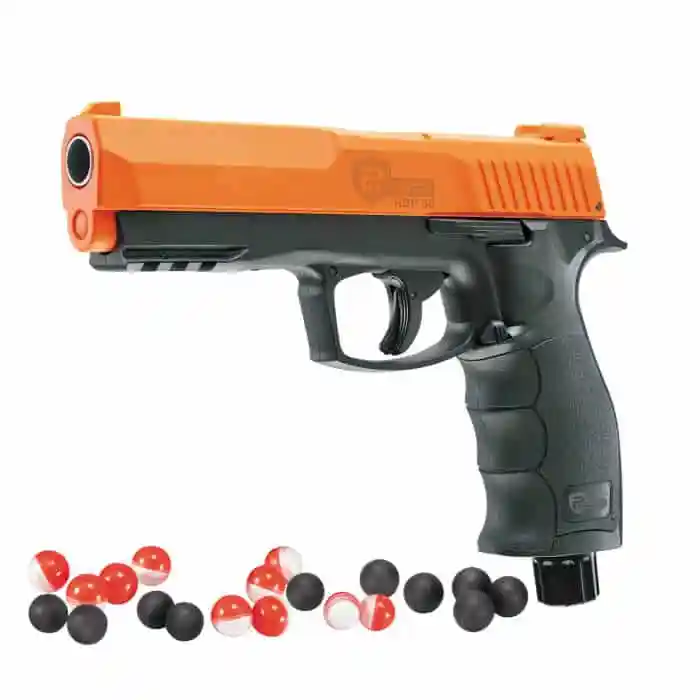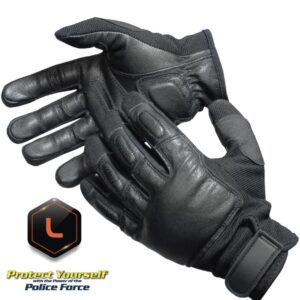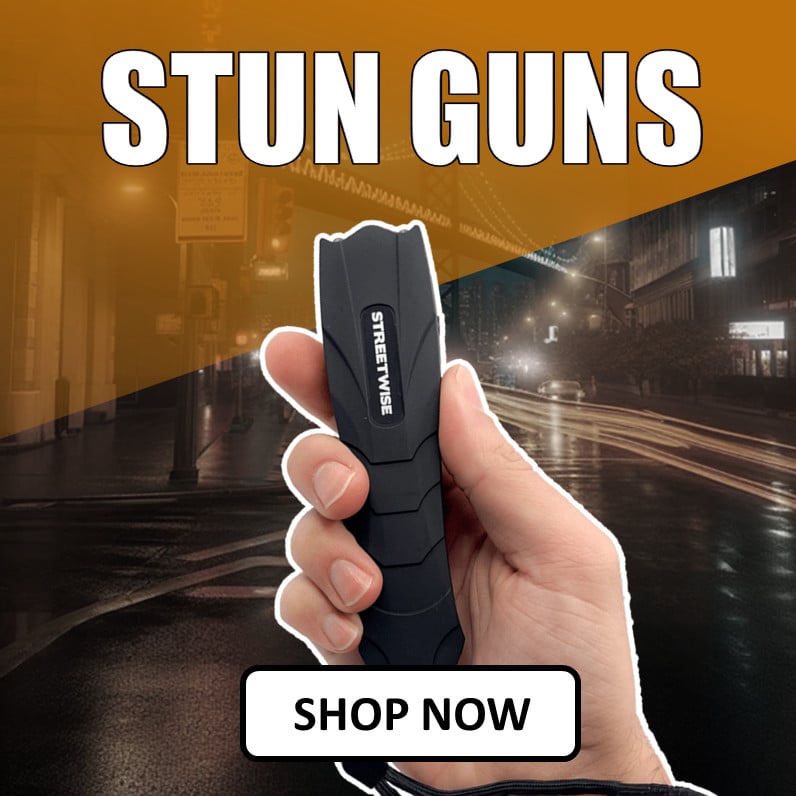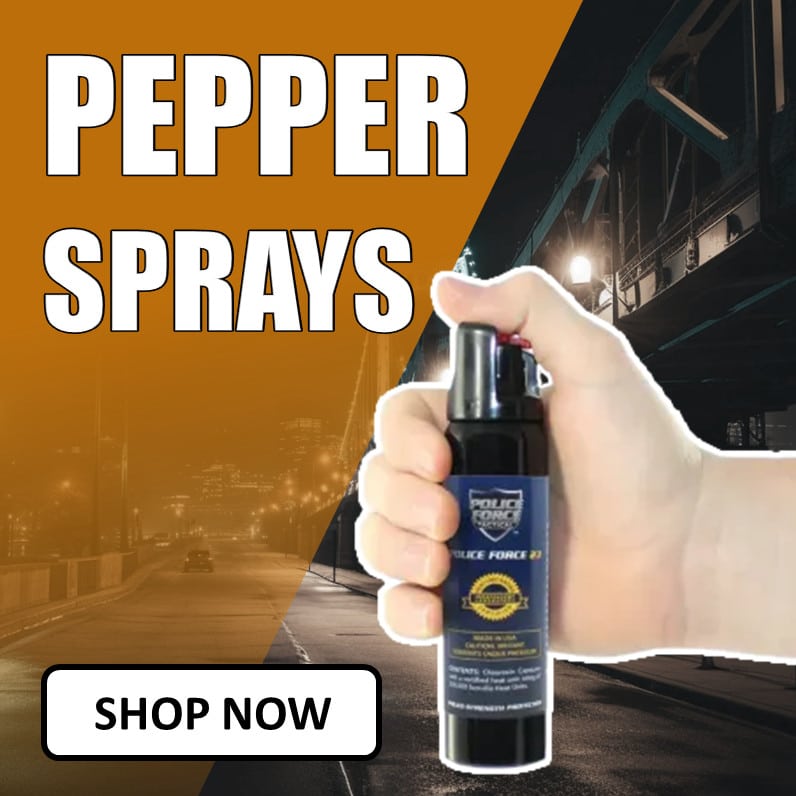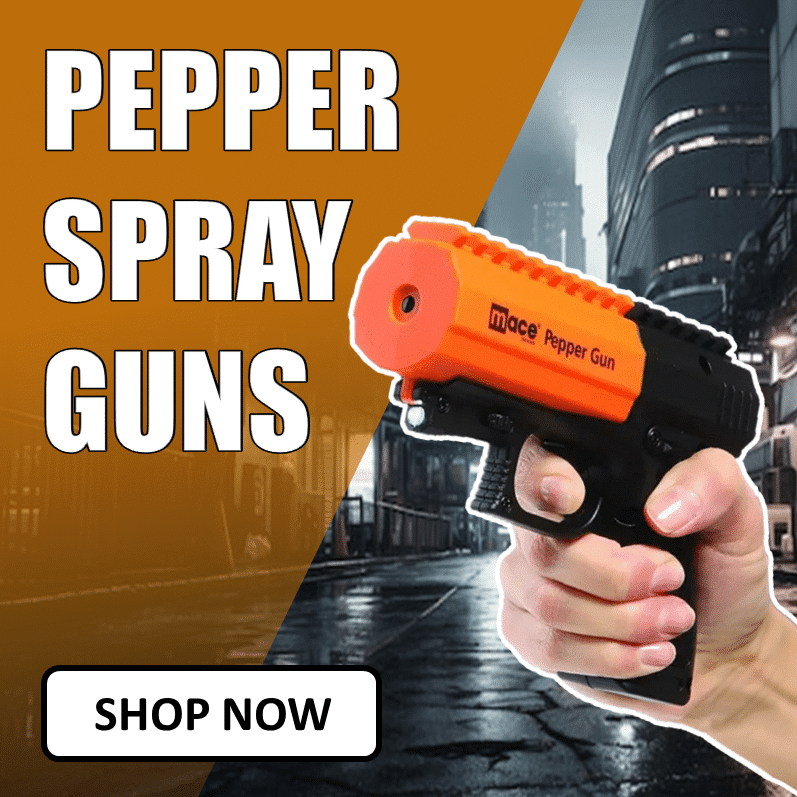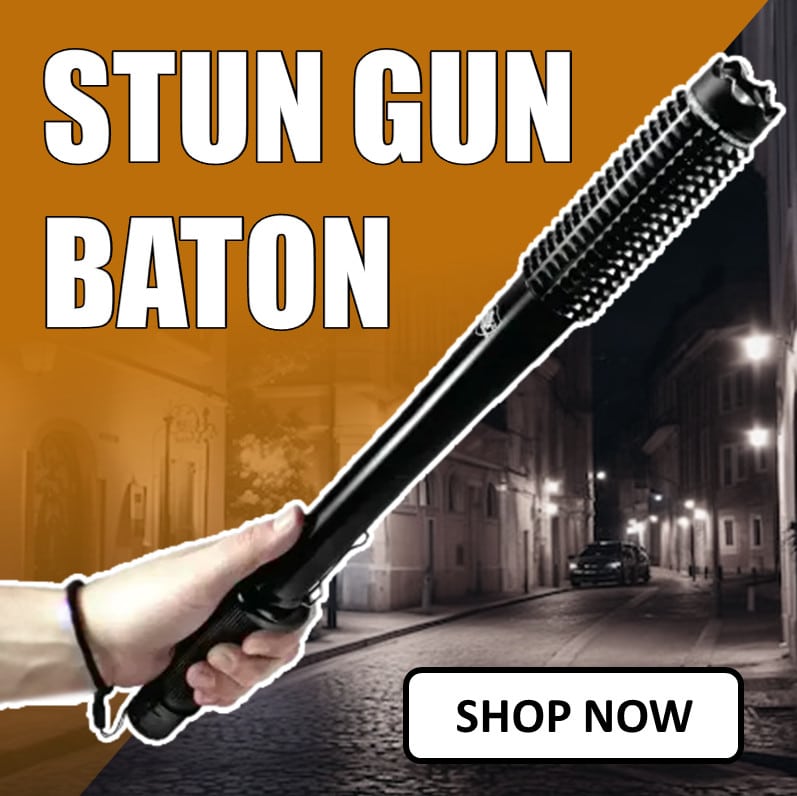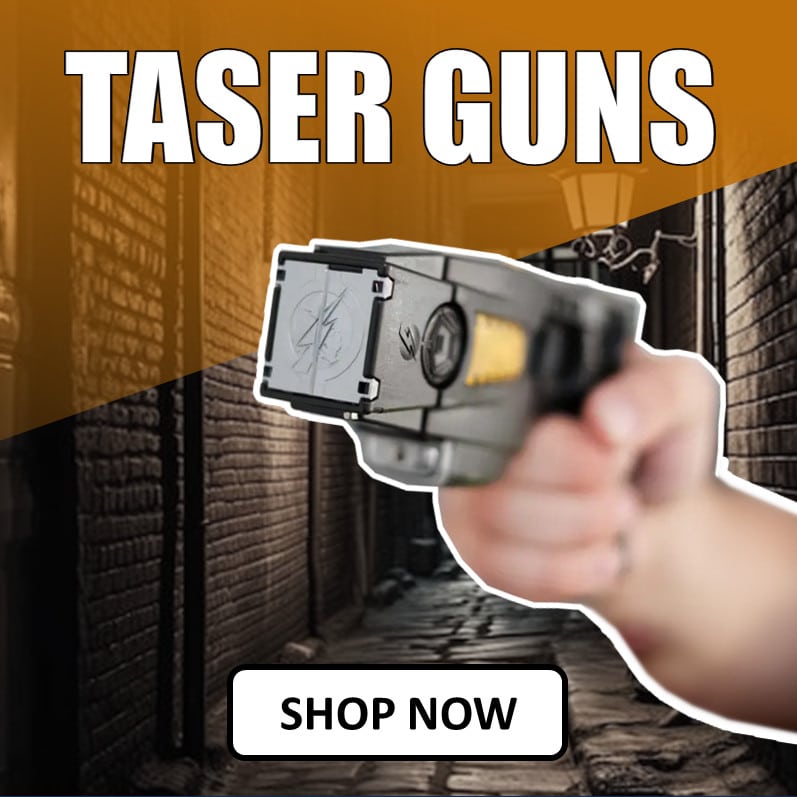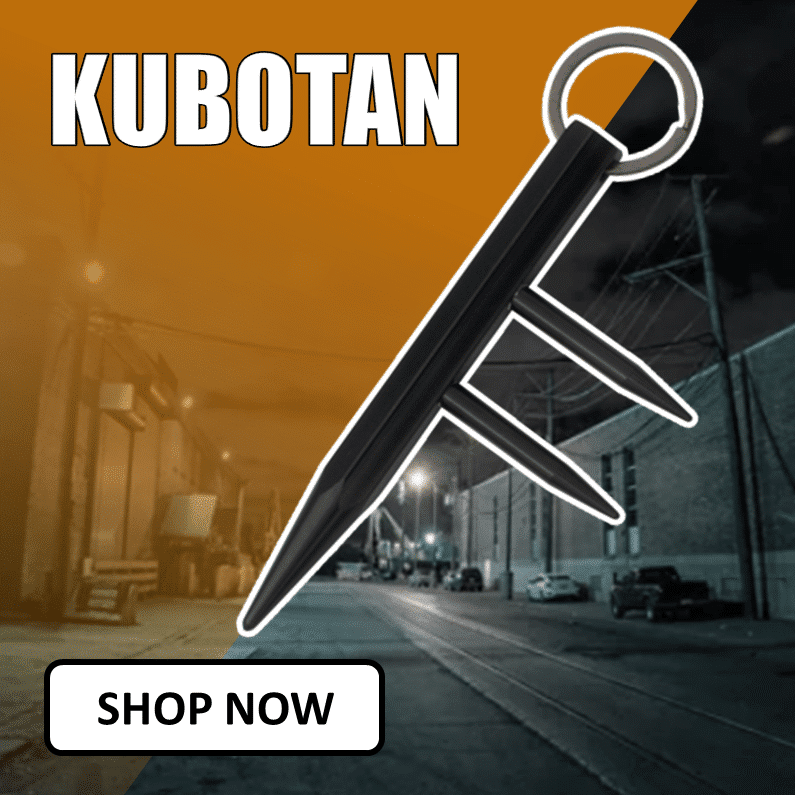In today’s world, personal safety is a top priority for many individuals. Self-defense weapons can offer a sense of security and empower people to protect themselves in potentially dangerous situations. This article covers various self-defense weapons and important factors to consider when choosing the most suitable option for you.
Types of Self-Defense Weapons
Electroshock Weapons: Stun Guns
Electroshock weapons, commonly known as stun guns, are specifically engineered to temporarily immobilize assailants through the emission of a high-voltage yet low-amperage electrical charge. By interrupting the neural communication between the brain and muscular system, these devices induce a temporary state of paralysis. Available in a range of sizes and designs, stun guns are effortlessly portable and can be discreetly concealed.
Upgraded Electroshock Tools: TASER Guns
TASER Guns offer a significant improvement in power and range compared to traditional stun guns. These advanced devices operate by launching two electrode darts connected to electrically conductive wires, delivering a potent electric shock that incapacitates the target from a distance. A key benefit of TASER Guns is that they do not necessitate direct contact with an assailant, allowing the user to preserve a safe distance while defending themselves.
Electroshock Tools with Extended Reach: Stun Batons
Stun batons bear a resemblance to stun guns but incorporate a lengthier, baton-like structure. This elongated design offers added security by enabling users to maintain a greater distance from potential assailants. Stun batons are an ideal choice for individuals seeking a combination of striking power and electroshock functionality.
Multifunctional Self-Defense Devices: Stun Gun Flashlights
Stun gun flashlights merge the practicality of a flashlight with the defensive capabilities of a stun gun. These versatile gadgets are ideal for those seeking a covert and functional self-defense instrument that can seamlessly integrate into their daily carry essentials.
Irritant-Based Defense Tools: Pepper Sprays
Pepper sprays consist of aerosolized oleoresin capsicum (OC), a substance extracted from chili peppers. Upon being sprayed directly at an assailant’s face, it induces intense eye, skin, and respiratory discomfort, temporarily disabling them. As a non-lethal and conveniently portable solution, pepper sprays are a popular choice for personal self-defense.
Factors to Consider When Choosing a Self-Defense Weapon
Legality
Before purchasing a self-defense weapon, it’s essential to research local laws and regulations. Some weapons may be restricted or prohibited in certain areas, so ensure you’re compliant with the law to avoid potential legal issues.
Size and Portability
Choose a self-defense weapon that suits your lifestyle and is easy to carry. Smaller devices like pepper sprays and tactical pens are more discreet and can be carried in a pocket or purse,
while larger options like stun batons and TASER Guns may require a holster or dedicated carrying case. Consider how you will carry the weapon and whether it will be easily accessible in an emergency situation.
Ease of Use
Select a self-defense weapon that you feel comfortable using and can operate effectively under stress. Familiarize yourself with the device’s safety features and practice using it regularly to build confidence in your ability to protect yourself.
Level of Force
Consider the level of force you are comfortable using to defend yourself. Non-lethal options like pepper sprays and stun guns can incapacitate an attacker without causing long-term harm, while weapons like tactical pens may require a more aggressive approach. Choose a self-defense weapon that aligns with your personal values and comfort level.
Proper Training and Safe Handling
No matter which self-defense weapon you choose, proper training and safe handling are crucial. Invest time in learning how to use your chosen device effectively, and seek professional instruction if available. Additionally, always follow safety guidelines to minimize the risk of accidental injury to yourself or others.
Maintenance and Care
Self-defense weapons require regular maintenance to ensure they remain in good working order. Clean and inspect your device according to the manufacturer’s recommendations, and replace any consumable items like batteries or pepper spray canisters as needed.
Conclusion
Selecting the right self-defense weapon is a personal choice that depends on factors such as legality, size, ease of use, and level of force. By considering these factors and investing in proper training, you can feel more confident and secure in your ability to protect yourself in potentially dangerous situations.
FAQs
Q1: Are stun guns and TASER Guns the same thing?
A1: No, while both are electroshock devices, stun guns require direct contact with the attacker, whereas TASER Guns can be used from a distance by shooting electrode darts.
Q2: Is it legal to carry a self-defense weapon in public?
A2: Laws and regulations regarding self-defense weapons vary by location. Always research local laws and obtain any necessary permits before carrying a self-defense weapon in public.
Q3: Can pepper spray cause permanent damage?
A3: Pepper spray is a non-lethal self-defense option designed to cause temporary incapacitation. While it may cause severe irritation, it is unlikely to cause permanent damage when used properly.
Q4: How often should I practice using my self-defense weapon?
A4: Regular practice is crucial to ensure that you can effectively use your self-defense weapon in an emergency. Aim to practice at least once a month, and seek professional instruction if available.
Q5: Can I travel with my self-defense weapon?
A5: Traveling with self-defense weapons may be subject to restrictions, particularly when flying or crossing international borders. Research the specific regulations for your mode of transport and destination before traveling with a self-defense weapon.



